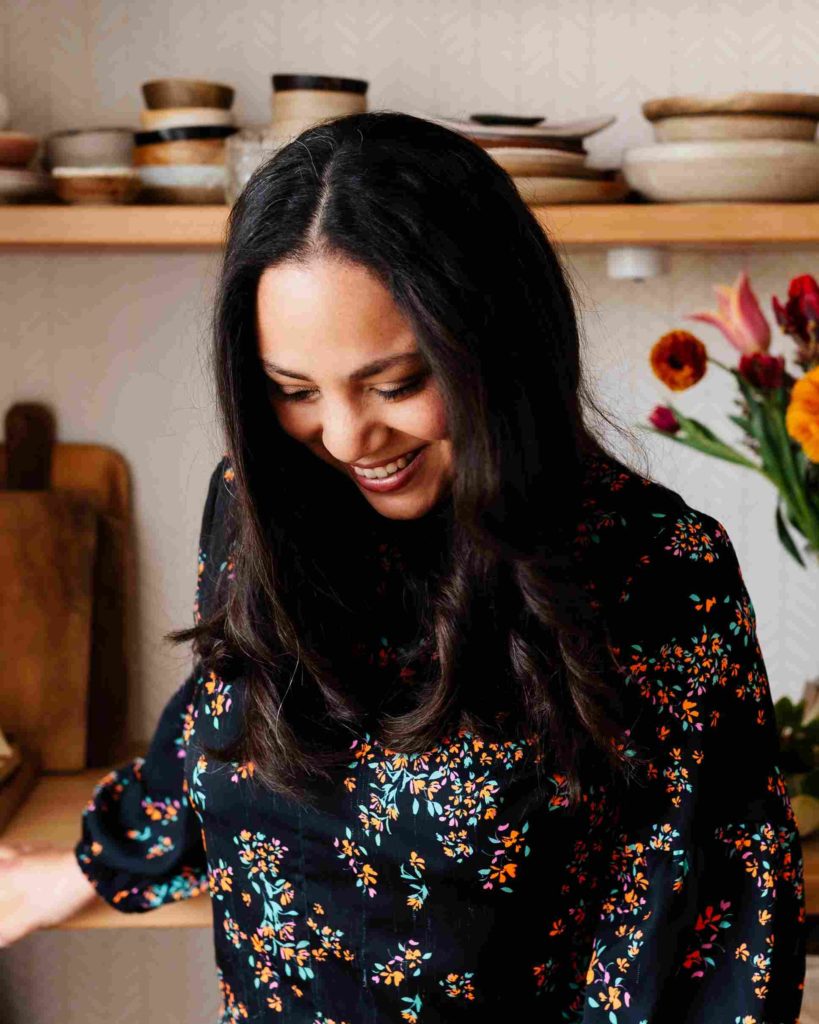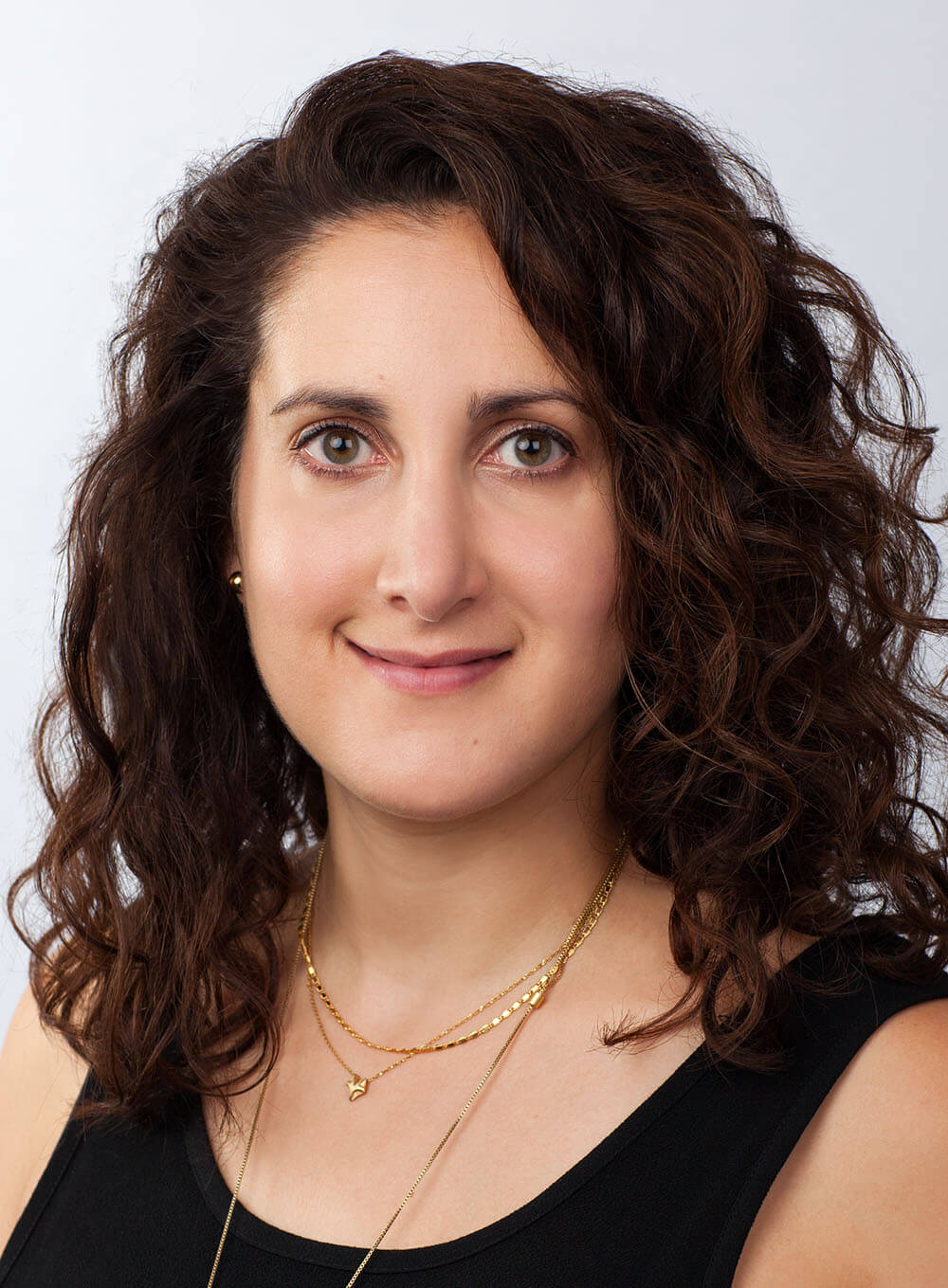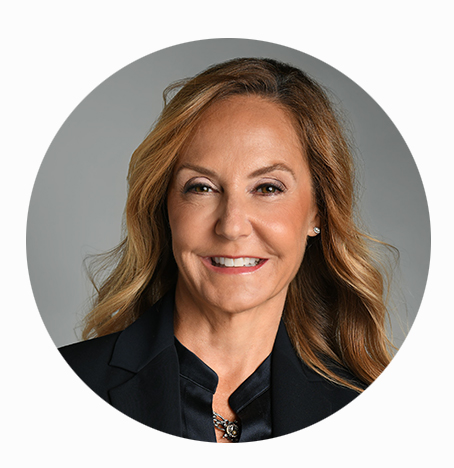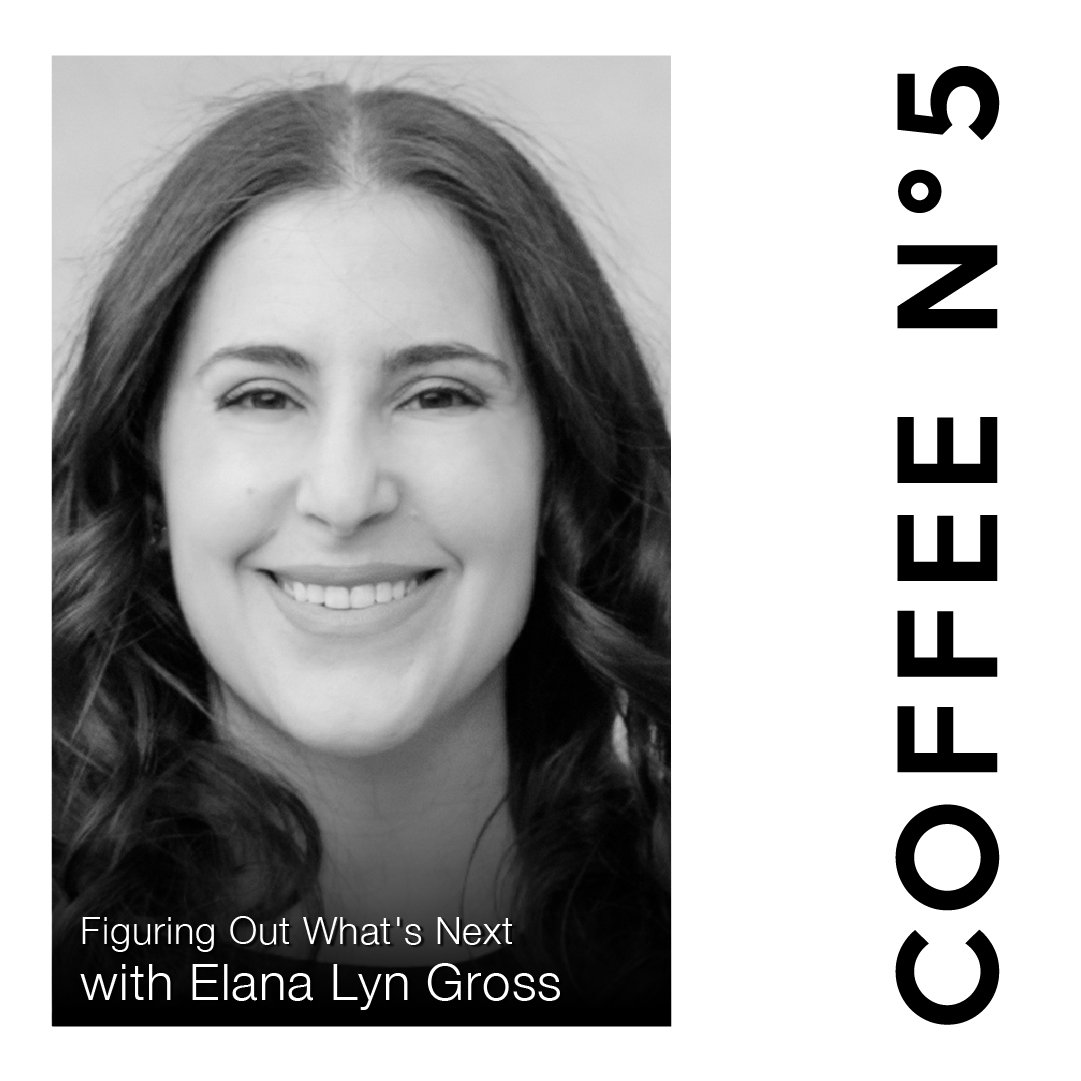Lara Schmoisman 0:02
Hi, everyone. Welcome back to coffee number five. I’m really ready here with my coffee this morning and I need extra coffee. I just came back from New York and somehow the the jetlag really hit me this time. So I don’t know it was my body. That’s a known what timezone I am right now. So the extra caffeine is really helping. So also, I would think because today I got my new driver license, I have no, no say in how you’re looking at those pictures. Luckily have no say. And it could have been worse. Let’s put it that way. It could have been much, much worse. But that keeps me thinking, the importance of how we photographers pay things, how we are we look because we are our own product sometimes, or our products look. So I’ve been reaching out to this lady that I was connected. I don’t know how for a while and we had this in the books for a long, long time. And then they would have to reschedule. But finally she’s here. Kimberly Espinel, our Welcome to Coffee number five. Kimberly.
Kimberly Espinel 1:14
Thank you, Lara, thank you so much for having me. I’m very excited for today. And for our conversation.
Lara Schmoisman 1:20
Yeah, well, we are aligned in so many ways. We are both online in helping entrepreneurs. We are not the competition, we are not doing the same we’re doing we actually complete each other. And I love what you do. Because you’re not only an incredible photographer, you help entrepreneurs who understand how important is there to create these different steps or pieces of the ecosystem and pull it together. But also you can contribute with them in the importance of imagery. It’s so important. And I was talking I actually had a live in Instagram, I think was last week with a photographer also was a product photographer. And people don’t realize that when they launch a brand to have a budget for certain things. Do ya find out that that’s an issue with photography that everyone now can have a phone or a good camera, they think that their pictures are going to be good enough.
Kimberly Espinel 2:22
So you know, it’s really interesting, because I know when the iPhone came to be, and you know, quote, unquote, everybody could be a photographer, just like everybody now can be a videographer. No, I think the very old school photographers did get a little bit nervous. But actually what I have noticed, and what I think is going to happen with videography, too, is that it actually creates more demand actually creates more demand for really, really good photographers. And so any what I have seen in what I’ve seen also for my mentoring clients is that as long as you’re good, and what you create is different, and you have a unique look, that stands out that’s noticeable, you will always find work and there is more and more and more work to be had. So I actually have found the opposite, especially because I think restaurants and brands have actually noticed a takes a lot of time. And it also takes a lot of knowledge to make your photo look good. Yes, everyone can take a photo. But not everyone can do it and make it look beautiful.
Lara Schmoisman 3:28
I like people now here that my first degree is in production and direction of television. And one of the things that I had to learn in schools was to add it back then we didn’t have digital. So it had to be manual, which was a lot more challenging. I always was working with a couple guys that they were editors, and they will seen things that my I wasn’t seeing it. And I was Oh my God, what do you see that? And I honestly wasn’t seeing it. And after years of work and and training night, I’m in the opposite side, and I can see things that people cannot see. So there is something to be said about experience and the training. Because photographer is there i is trying to see beyond what is there.
Kimberly Espinel 4:18
Yes. And also to go back to your example of Fashion Week, because you just mentioned you were there. You know a lot of us, we can put something on and then know that it looks good. But we don’t always know why we don’t understand why. You know, whereas a designer or a fashion expert or something they will see in this it looks good because a B, C and D and it’s the same with photography, like a lot of people take photos, and then they’re like, I don’t like it, but I don’t know what I’ve done wrong. I don’t know. You know what I don’t understand, or I’ve done it in a way I don’t like but I don’t know how to fix it. So it is a very particular skill and it takes time and knowledge and as you mentioned Lots of experience to get it just right.
Lara Schmoisman 5:01
And also because it’s time consuming, I mean, I with a lot of learning and failing and learning again to get what we got today, but also is other kinds of knowledge. Like for example, if I’m working with a brand, I’m going to be looking at the competition, what is the competition doing because I don’t want to do exactly the same that they are doing. I want to do something and see how I can do it better. So and for what direction I go. And that’s where my classes in psychology, our marketing came handy because I learned to think the psychological part or even I had to take class of designs or the the psychology of colors or the psychology of phones, all that is an for you, I’m sure the lighting the spacing, although things you need to keep in consideration.
Kimberly Espinel 5:54
Yes, composition is huge colors, as you mentioned, but then also things like, you know, bowls, ceramics, backdrops. And not just that, but it’s, it’s also really expensive, you know, to, to hire that to buy it, to store it. So it’s not just a quick thing of picking up your iPhone and taking a shot. There’s a whole whole lot that goes on behind the scenes to make a beautiful shot.
Lara Schmoisman 6:21
I love to talk about the specifics, because a lot of people out there are trying to understand Yeah, we’re speaking about all these concepts about photography, and you specialize in restaurants and in food, right?
Kimberly Espinel 6:34
Yes, that’s correct. Okay.
Lara Schmoisman 6:36
So how do you make the dish look amazing, because sometimes I seen all those videos that are popular right now in Tik Tok, that, how use glue or food coloring to look at these, but also they’re very expert photographers, like yourself, that they are working with the real thing.
Kimberly Espinel 6:57
Absolutely. So I work mainly in with restaurants, and then in what we call editorial, so that’s cookbooks, magazines, also content for pupils website, that kind of thing. And in fact, the law here in the UK, where I live, is that for those kind of things, we’re not actually allowed to use glue and food coloring, things like that, because it’s considered misleading, really, you know, like, your, your isn’t actually the truth. So, um, so but but also, it is beautiful, I think, to work with the real thing and to challenge yourself. And I
Lara Schmoisman 7:30
know it is a challenge, because yeah, like glue hamburger is easy. And everything was taken in place our pudding. I mean, there’s a lot of things that you can do to enhance the image, like maybe put some double drops of water, of course, but there are natural things not trying to make it stick there.
Kimberly Espinel 7:54
Yes, exactly. So to go back to your original question, I would say there’s a couple of things to really help with food styling, or in generally to make your food photo look really gorgeous. And one is lighting. So that could be natural light, it can be artificial light, but both of them, you know, the lighting you use for food photography is very different than the lighting you use for fashion, for example, or for products even as you mentioned, I think the second thing is really to think about colors in your food. So you know, like, a piece of bread, like just a piece of bread is not going to look as nice as say, a piece of bread with some peanut butter, and then maybe some banana and a drizzle of maple syrup, you know, it’s gonna look very different. So there has to be some colors, some texture, as well, those are really essential elements in helping, you know, the food styling, look next level. And then the truth is that I started out as a prop stylist, and then became a food stylist. Now, I’m mainly a food photographer. And so what I do now is I work with food stylists, so you know professionals who really allow me to stay behind the camera and direct and compose and play with light and all those things and they go and style and so and so
Lara Schmoisman 9:09
let me clarify this. So when you work with a foot stylist, how does it work? You first have a meeting and you have an inspiration of what’s your vision for those pictures, or is it stylists vision?
Kimberly Espinel 9:24
No. So as a photographer, you’re really in charge, you know, you have the kind of bigger picture overview. You decide where things go, but you do have a meeting usually with a client to see what their vision is what they want. Often I asked the client to put a mood board together to give us a kind of rough sense of, you know, the images they have in their head where they want their brand, their restaurant, their cookbook, whatever, you know, the, you know, the creative direction of that. And then I put my head together with a food stylist and we come up with a shoot list and a plan and we discuss, You know things like, if we’re making a cake, for example, like an apple pie or something like that, like, how should the food stylists slice the apples? Are we going to create little cubes? Are we going to make little, you know, like, very, very thin? So all those kind of things we talk about in advance and set that in advance, and then we kind of take it from there. But as a photographer, you always have the last say, and it also is your responsibility for everything to turn out perfectly. So yeah, you kind of direct the food stylist and but, you know, ideally, you’re working with really experienced people really, really good people, you choose your team. And, you know, they make they make your work super easy.
Lara Schmoisman 10:42
Like, what about location.
Kimberly Espinel 10:45
So I have a home studio. But you know, if not, here, where I live in London, there’s a lot of studios, sometimes also issued in the restaurant or cafe and what I always advise, if that’s something you’re going to do, then check the lighting situation. So you’re going to use natural light, either visit, that’s probably your best bet, just to check and see how it goes? Or do you need to bring your artificial lights? And is there space for it? Is there big enough space? Are there going to be customers walking around that kind of thing. Maybe check out the menu in advance, have a shoot list. So those are some of the things that will definitely help when you shoot on location?
Lara Schmoisman 11:26
Yeah, so it’s so important that people out there understand that when you hire photographer is so much more beyond the moment of taking a picture, whereas they are getting they are getting all the planning ahead. And so it’s really important that communication with your photographer, and that you explained this is what I want. This is my goal. And this is how the images will be used for because it’s different for a photographer to work with for a menu, or for editorial that for pictures for social.
Kimberly Espinel 11:59
Absolutely, absolutely. And so, you know, that’s something you know, really interesting that you mentioned usage rights. So that’s something you always have to discuss in advance. So is it something as you mentioned for digital use, and or is it something that’s going to be you used for an ad, be it a Facebook ad or Pinterest ad, or whatever an ad on Tik Tok or in a magazine, so all of those things bring with it also a different budget. And then the other thing that a lot of people don’t think about is, you know, somebody has to buy the food, somebody has to wash the dishes, or somebody has to pay the bills for the water that was used to wash the dishes and that kind of thing. Props break backdrops scratch. So there’s a lot of, you know, finances. Behind the scenes,
Lara Schmoisman 12:49
you always have you have an assistant working with you, I’m sure,
Kimberly Espinel 12:53
yes. Well, usually the food stylist is my assistant. Sometimes they also have an assistant top of that, it kind of depends how big the project is.
Lara Schmoisman 13:02
Okay, so let’s say that someone is starting their own restaurant, what would you recommend what is it must list the most must photography list for a new business.
Kimberly Espinel 13:16
So what I would advise, it kind of depends. So it’s a little bit tricky, because generally speaking, I wouldn’t advise a restaurant to have, you know, to also do their own photography, I would advise them to hire a photographer to do that for them. Now, of course, it depends a little bit on the size of the restaurant their budget.
Lara Schmoisman 13:40
Like for example, if they asked me as a marketing agency, I will say absolutely booked in your budget a photographer, because you need a good pictures of the your menu for people to see and via the cost for your website, you will need all that. If you are short, your budget is small, then I will say well, you know what social, maybe you can do it with your own photos. But good pictures for your website are a must. And I will I will recommend strongly recommend to you as a photographer.
Kimberly Espinel 14:10
Yes. And also, you know, as we mentioned before, I think even if your budget is small, you know, sometimes we say we say this in Spanish lo barato sale caro . So something that seems really cheap, and like a way of saving money actually in the end will cost you dearly. And so I think if what you if you don’t hire photographer or if you don’t hire a social media manager, and that’s really where a lot of businesses now have to move towards and you decide to do that in house AKA, whatever the chef or whatever that means you’re pulling that person away from what they need to do.
Lara Schmoisman 14:50
To create this is what I always say you need to find how much your time is worth. You’re gonna have to spend two days taking pay until you get some decent pictures, and you bought all these kind of props, you had to buy new lighting for the you have to have an assistant to do those days you weren’t running your business.
Kimberly Espinel 15:12
Exactly. Exactly. Exactly. And I mean, I have to say I do feel for restaurants that are just starting up, you know, startups, it is really tough, it is a tough to make your mark, the restaurant industry is very hard. I think something like 60% of restaurants closed within the first week
Lara Schmoisman 15:29
was also that could be one of the reasons a lot of restaurants are failing, because they not marketing them. Right. They think such opening the door, I always say is the same like selling a house, if you spotted a house, but you don’t photograph it right. You don’t get the good images, and then you don’t put it in the market to sell it. Nobody’s gonna see it as Yes,
Kimberly Espinel 15:55
yes, I mean, you know, recently heard somebody say, I don’t know who it was. So I cannot quote correctly. But you know, there’s the saying, you know, build it, and they shall come. And then I recently heard someone say, but that’s not true.
Lara Schmoisman 16:09
It’s not that they fail.
Kimberly Espinel 16:12
It’s not like that anymore. And I think a lot of businesses, especially creative businesses, that’s what I know. And that’s what I understand. When I consider a food business or creative business, they really think that because they want it and they dream it and their food is amazing that, you know, it will happen and everybody will come and there will be cues on down the road around the corner. And it is not like that anymore. Because a there’s so much and there’s so much for people to choose from. But be if you don’t have a marketing strategy, it is very, very hard to make ends meet. And I also, I also think a lot of people are like, I know how to cook, or I know how to photograph or I know how to, you know, build a house, but I don’t know how to sell and, and actually, maybe you don’t know, but you either need to learn how to do it, or you need to hire somebody who does. Because it’s a fundamental part to making your business work.
Lara Schmoisman 17:08
Absolutely. And it’s really important that you have a team behind you, when if you’re launching a business, I understand what is to be a solid entrepreneur, because I am behind me at all, I won’t be able to meet with clients or even doing this podcast, if I have a team working behind me and making things happening. That’s so true. Yes. And it’s really important that you understand you get in the mindset of the business owner, how important is to network, even you have a restaurant, a marketing agency, you never know what connections you’re gonna make. And those connections are the kind of can’t break it or make it that if you you meet someone important that they come to the restaurant and like it and recommend set hour that you’ll get someone and events to happen in your restaurant, you never know. But as a business owner, it’s really important to put yourself out there.
Kimberly Espinel 18:04
Absolutely. 100%. And I love that you said networking, I think it’s you know, especially after COVID. For many of us, we’ve kind of you know, gone very inward and you know, not put our feelers out, not gotten out into the world. And I
Lara Schmoisman 18:22
go back to my feet after this week working working in New York, on heels. I was so I have so long that I think my shoe started I was at.
Kimberly Espinel 18:34
Exactly, you know, so it’s, I think it is I think a lot of people still are stuck in that in that insular bubble. But actually networking and connecting with people within your industry is really important and, you know, supporting one another. And as you said in the beginning of this podcast, we’re not competition, we’re just, you know, working together in the space serving different clients in different ways. Like
Lara Schmoisman 19:02
I have people I know other people have agencies, and I only work with certain clients right now and only have a capacity of clients is the same like you are as a photographer, you and you booked. So I’m happy to refer other people who are in their certain fields. I work with certain kinds of websites only I don’t work with other CMS, so I’m happy to refer to someone else. But I think our goal as professionals always is if we we want anyone who comes to us because of respect our work to end up with someone that is respectful and they know what they’re doing. And not that that person who was trusting us and having a bad experience for finding someone who is not as professional.
Kimberly Espinel 19:52
Yes, absolutely. I couldn’t agree more.
Lara Schmoisman 19:55
So before we go, I want to ask you a question because I am I’d love to hear personal stories about both tell that story of something that went completely wrong. That felt that that was completely wrong. But because it was completely wrong, you were able to pull it off and was amazing.
Kimberly Espinel 20:17
Oh, wow. I don’t know. I don’t know if I have that as a story, per se, I guess my wish is a little bit different, but I hope it still hits the mark. So to say, Okay, I, I really had this huge, it was like I one, honestly, one day I woke up, I was like, I want to write a book, I know, I need to write a book. This is a book about photography, I have to bring out into the world, like I know, and I know that I’m gonna get a publisher, and it’s gonna be amazing, and everyone’s gonna buy it. And so I wrote an amazing proposal. And I did it. Like, I recorded everything from my podcast of a podcast called lead, capture, share. And I recorded it like every step along the way. And I was like, you know, we’re gonna hear how I pitch it, and how I’m gonna get my book deal and how the books gonna go on to be a best seller. And you know, I live happily ever after. And so I’ve recorded everything every step along the way. And I submitted my proposal, and I got rejected, and I submitted it again, and they got rejected again. And in total, I got rejected 32 times. And everything was live on the podcast. And I never got my book deal. And so that was not like what I had envisaged. But I knew deep down that I really wanted to bring this book to life. And in the middle of the pandemic, I shot it. I self published it as well. And it did go on to become a best seller, and I did make that happen. But it wasn’t what I envisaged. It wasn’t what I dreamed of. And it was a very vulnerable to share, you know, that failure live, so to say, but yeah, I think all things happen for a reason. And, yeah, it completely changed everything for me. And it just went exactly the way it needed to. I just didn’t know it at the time.
Lara Schmoisman 22:18
i You just need to be open minded and take the opportunities learn and the failures to learn from them. And keep going. I mean, yes, one failure is not gonna label you as a failure of one winner, when it’s not labeling you as a winner either. No,
Kimberly Espinel 22:37
no, exactly. Exactly.
Lara Schmoisman 22:40
Well, thank you so much, Kimberly, for being here today. I’ve really enjoyed this conversation. And I’m sure you guys out there, learn a lot about how to get your images, right for your business. So thank you again for being here.
Kimberly Espinel 22:56
Thank you, Larry. Thanks for having me. And to you guys.
Lara Schmoisman 22:59
I see you next week with more coffee number five








